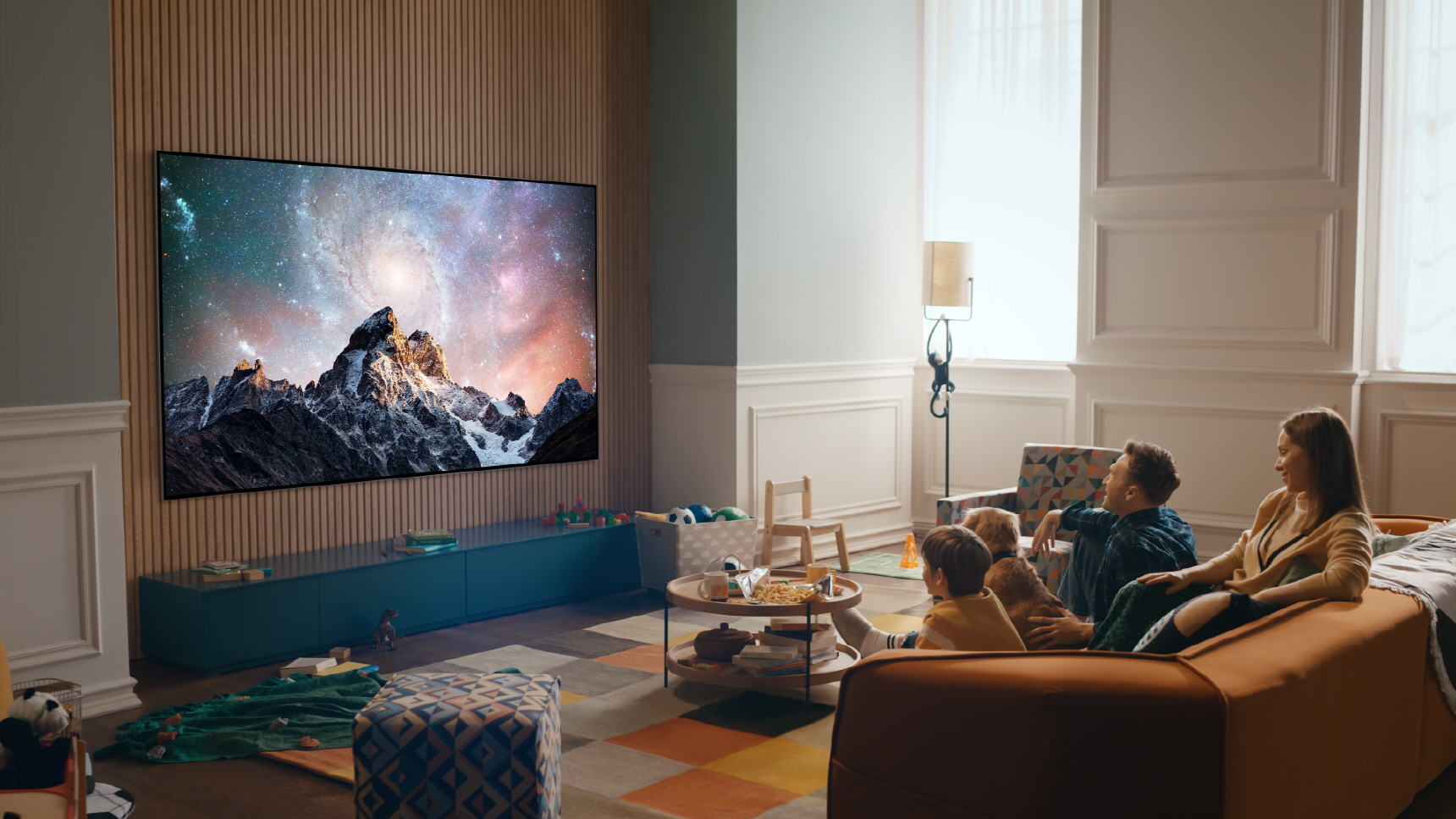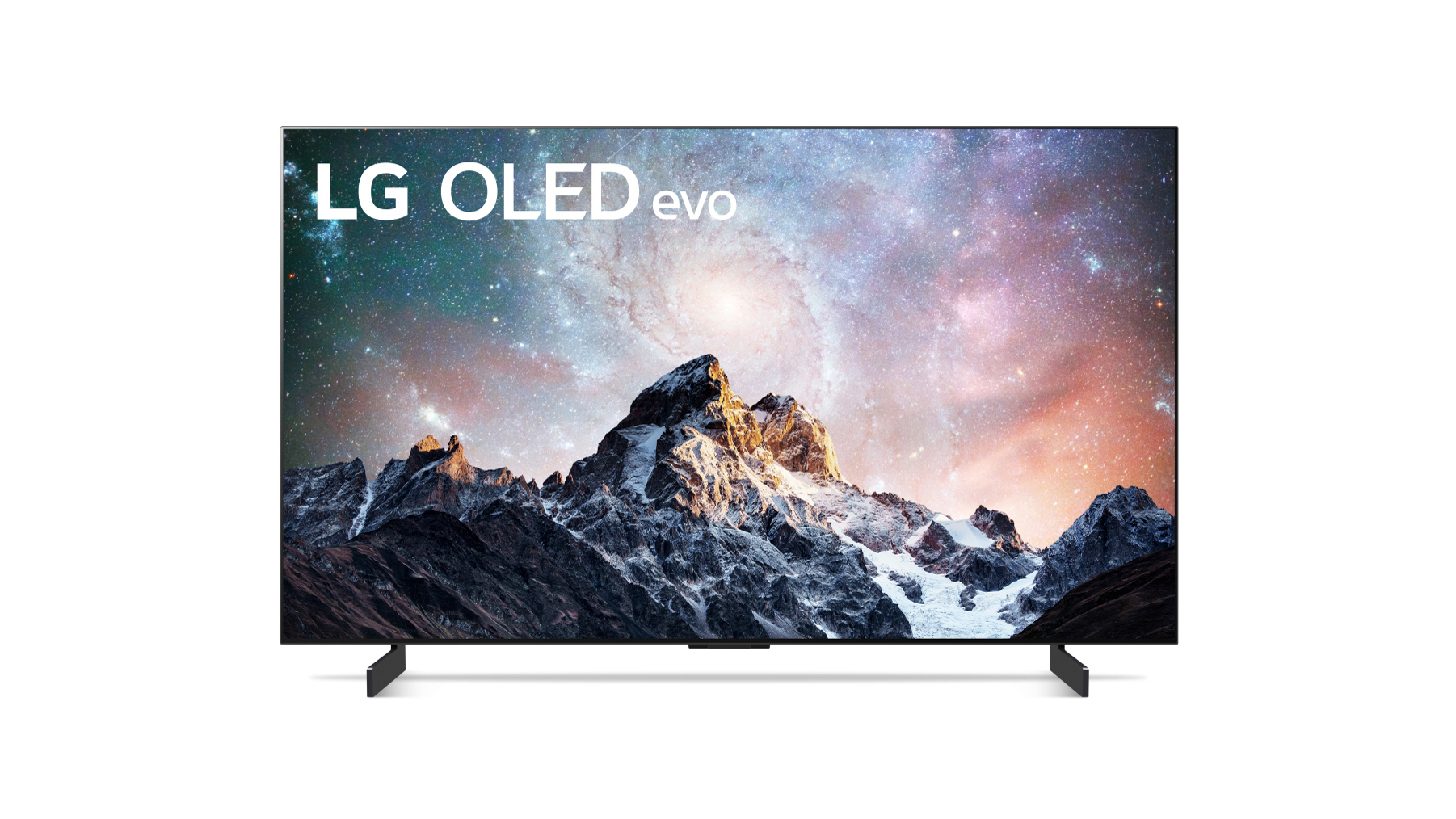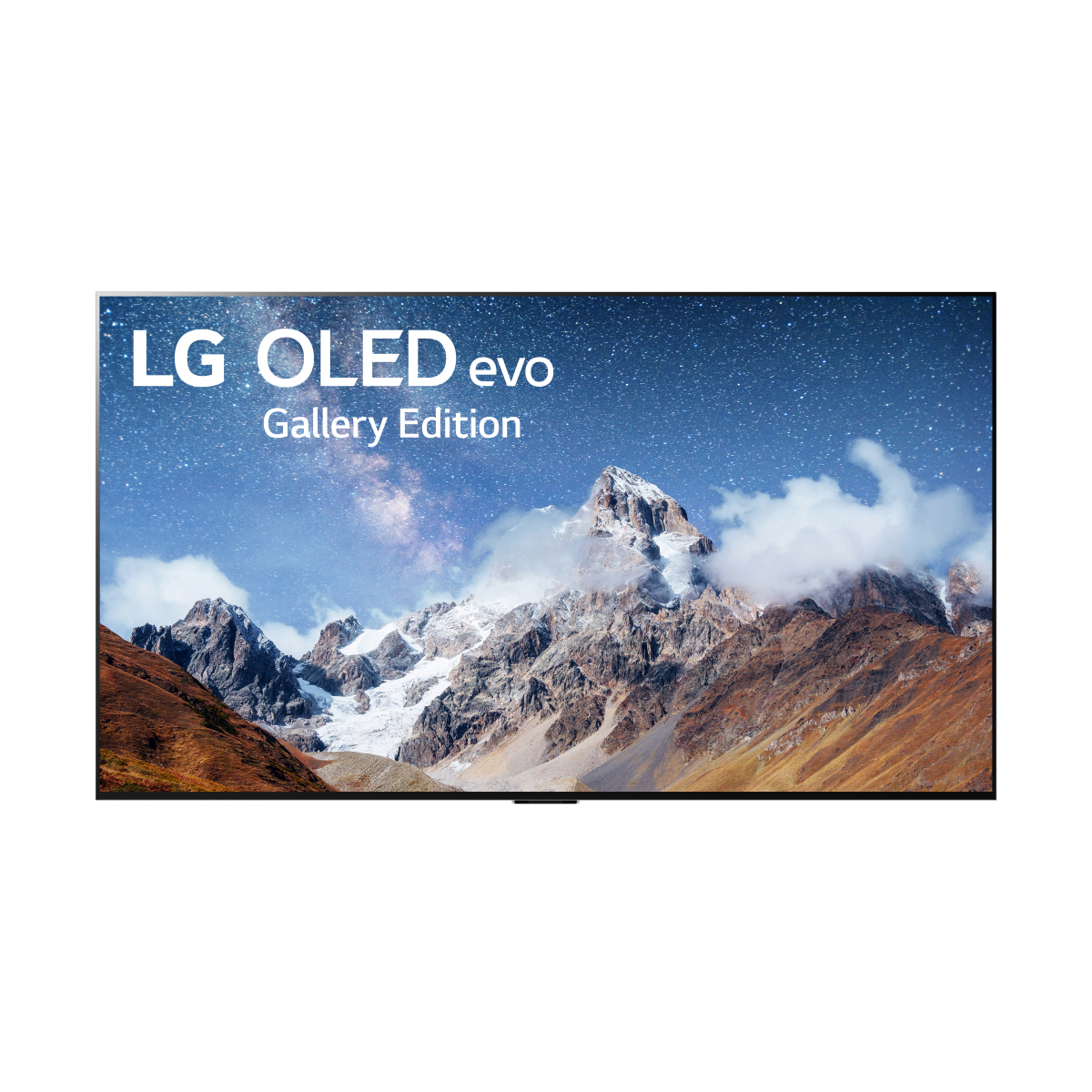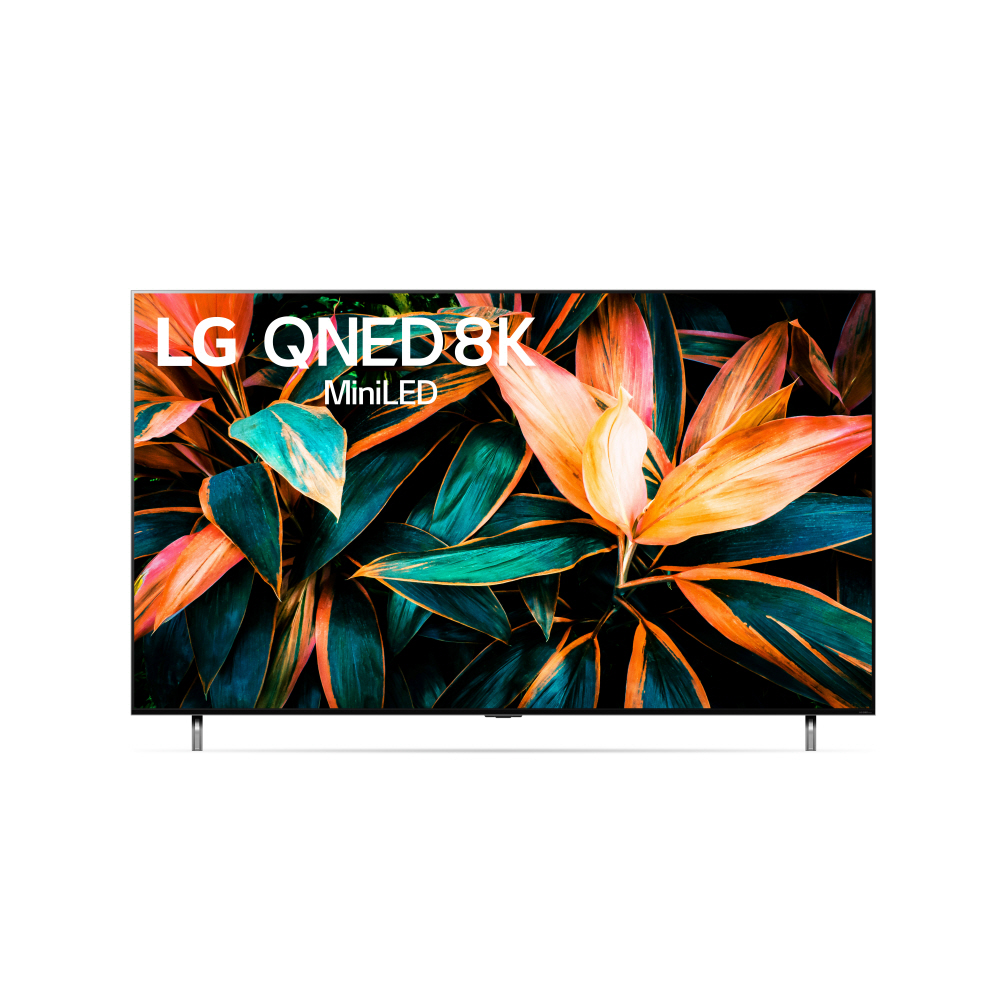LG outlines its TV line-up for 2022, doubling down on Evo and introducing OLED.EX
The company is also expanding its screen sizes with 97-inch and 42-inch OLED options.

LG has announced its plans for its 2022 TV line-up that will see the company's flagship OLED Evo tech extended from the premium G-series down to the more affordable C-range.
OLED Evo technology, which the company first introduced last year, enhances the brightness of LG's standard OLEDs by using deuterium, an organic material with a longer lifespan that can withstand a higher voltage and includes a green-emitting layer.
In 2021, this new panel was restricted only to the top-end G1, but, after the success of Evo, 2022's new G2 the C2 ranges will both sport the OLED Evo tech, making a higher-performing panel available at a more accessible price.
That said, the G2 apparently does still have a picture performance advantage over the more affordable C2: while both benefit from a new, reformulated panel and processor, the G2 also benefits from the addition of heat dissipation technology that LG says will make it even brighter in terms of both peak and average nits.
LG's OLED Evo TVs will also be available in a broader range of sizes than ever before. The G-series will acquire a super-sized 97-inch option as well as an 83-inch size, the latter of which was last year limited to the Z1. Meanwhile, the popularity of the 48-inch C1 with gamers and those with less room has prompted the addition of a 42-inch C2. However, the two latter screen sizes do not have the same OLED Evo technology as the larger models but instead have standard OLED displays.
Both the G and C series will also sport slimmed down bezels, from 10.2mm down to 6mm, while the G2 will lose its 45-degree Chamfered design at the rear in favour of cleaner right angles. Constructed from a new composite fibre material, these models will also be up to 47% lighter than their predecessors.
It's not just the top of the range models that are getting a brightness boost in 2022. LG Display – suppliers of panels to LG, Sony, Panasonic and others – has announced that some of the innovations of Evo will be implemented more generally with the introduction of 'OLED.EX' screens.
Get the What Hi-Fi? Newsletter
The latest hi-fi, home cinema and tech news, reviews, buying advice and deals, direct to your inbox.
OLED.EX (an acronym of ‘Evolution’ and ‘eXperience’) will use deuterium and the proprietary algorithm-based ‘EX Technology,’ to help increase brightness by a claimed 30 percent compared to conventional OLED displays. The company says that EX.Technology can predict the usage amount of each individual diode based on your viewing habits to more precisely control the display’s energy input and therefor 'more accurately express the details and colours of the video content being played'.
As deuterium is more efficient and stable compared to the hydrogen based compounds currently used, it has a longer lifespan and requires less cooling meaning that overall panel thickness has been reduced by 30 percent compared to existing panels – this brings a 65-inch OLED panel down from 6 mm to a wafer thin 4mm.
It's not clear yet exactly which models and screen sizes will benefit from OLED.EX but the technology will be integrated into all OLED TV displays manufactured at LG Display's production plants in Paju, South Korea, and in Guangzhou, China, starting from the second quarter of 2022.

Elsewhere, LG has bolstered its already impressive gaming credentials by uncapping the bandwidth on its HDMI 2.1 ports so that they all run at 48Gbps. While the company's 2019 OLEDs sported 48Gbps HDMIs, 2020 and 2021 models have been capped at 40Gbps. Although it makes no practical difference as 40Gbps is more than enough bandwidth for all current video and sound formats, LG has sought to avoid any further consternation by returning to full-fat 48Gbps HDMIs.
Other improvements include an updated Game Optimiser menu with easier access to critical settings, and in addition to the four existing game genre presets, there will now be a fifth for sports. All models will also benefit from a new Dark Room mode to reduce eye fatigue when playing in low light by lowering brightness while maintaining contrast.

New for 2022 is the latest version of LG's Alpha 9 processor, now in its fifth generation, with improvements to picture and sound technology. These include more efficient AI upscaling and a new Dynamic Tone Mapping Pro Algorithm that will subdivide the screen into more discreet areas (by an order of 10). Meanwhile, Object Background Enhancement will gain a Dynamic Vivid Mode that can better differentiate between foreground and background, analysing them separately in order to create a greater depth of field. And finally, AI Sound Pro virtual upmixing gets increased from 5.1.2 to 7.1.2 of virtual height and surround channels.
All of LG's 2022 models will also benefit from the upgraded WebOS 22, already one of the very best TV operating systems available.
The new operating system further refines the changes made last year in order to improve personalisation and recommendations. Users can now create up to six profiles that can be accessed from the home page with personalised viewing recommendations, sport alerts, preferred app lists and bespoke ordering of content shelves.
There's also a Samsung-like ambient mode for when you're not watching TV but don't want to have a black rectangle in your room. Instead, the screen can display weather, a clock, art, personnel photos, animation or music with light animation. Models with a far-field microphone (that's the Z2, G2, C2, QNED 99, QNED90) will now be able to respond to voice commands when in standby mode, meaning you can check the weather without turning your TV on.

Beyond OLED, LG announced it would have a fresh range of QNED TVs, which combine Quantum Dot and NanoCell technologies, either edge-lit or backlit by Mini LED dimming zones.
While the entire lineup is yet to be outlined, LG has confirmed a mix of both Mini LED (with more precise dimming) and non-Mini LED models. At the top end, there will be the 8K QNED99 86-inch, which will have around 2400 independent dimming zones (with precision dimming Pro +) combined with LG's advanced dimming algorithm. The QNED90, meanwhile, will have precision dimming Pro Mini LED technology, and the QNED 85 will sport precision dimming. Finally, there's mention of the QNED80, an edge-lit QD NanoCell. The 8K QNED99 will have the Alpha 9 Gen 5 processor, while the three lower models have the step-down Alpha 7 Gen 5.
MORE
QD-OLED TV: everything you need to know about the game-changing new TV tech
These are the best OLED TVs available right now
There's now an LG OLED Evo TV with a motorised Kvadrat cover
Mary is a staff writer at What Hi-Fi? and has over a decade of experience working as a sound engineer mixing live events, music and theatre. Her mixing credits include productions at The National Theatre and in the West End, as well as original musicals composed by Mark Knopfler, Tori Amos, Guy Chambers, Howard Goodall and Dan Gillespie Sells.
